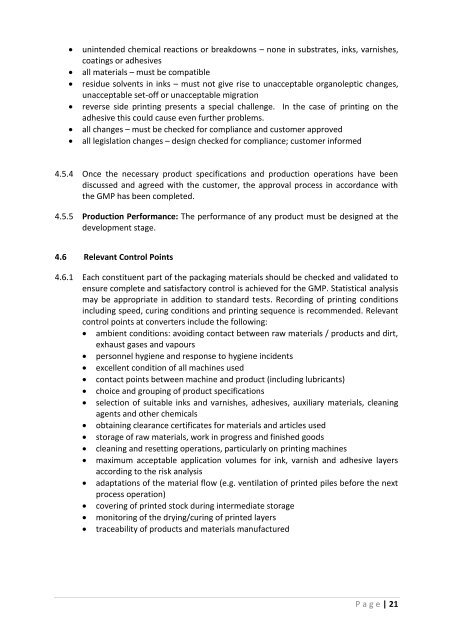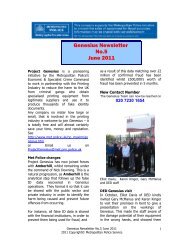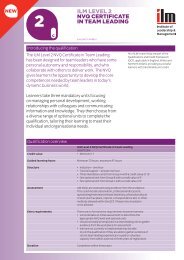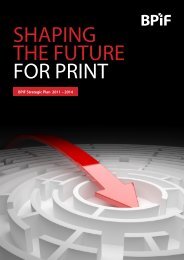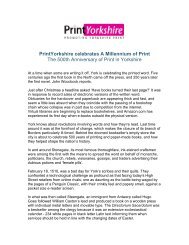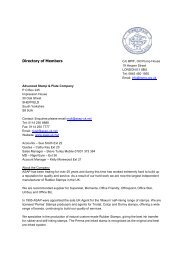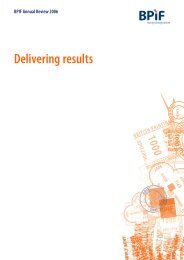Good Manufacturing Practice Guide - British Printing Industries ...
Good Manufacturing Practice Guide - British Printing Industries ...
Good Manufacturing Practice Guide - British Printing Industries ...
Create successful ePaper yourself
Turn your PDF publications into a flip-book with our unique Google optimized e-Paper software.
unintended chemical reactions or breakdowns – none in substrates, inks, varnishes,coatings or adhesivesall materials – must be compatibleresidue solvents in inks – must not give rise to unacceptable organoleptic changes,unacceptable set-off or unacceptable migrationreverse side printing presents a special challenge. In the case of printing on theadhesive this could cause even further problems.all changes – must be checked for compliance and customer approvedall legislation changes – design checked for compliance; customer informed4.5.4 Once the necessary product specifications and production operations have beendiscussed and agreed with the customer, the approval process in accordance withthe GMP has been completed.4.5.5 Production Performance: The performance of any product must be designed at thedevelopment stage.4.6 Relevant Control Points4.6.1 Each constituent part of the packaging materials should be checked and validated toensure complete and satisfactory control is achieved for the GMP. Statistical analysismay be appropriate in addition to standard tests. Recording of printing conditionsincluding speed, curing conditions and printing sequence is recommended. Relevantcontrol points at converters include the following: ambient conditions: avoiding contact between raw materials / products and dirt,exhaust gases and vapours personnel hygiene and response to hygiene incidents excellent condition of all machines used contact points between machine and product (including lubricants) choice and grouping of product specifications selection of suitable inks and varnishes, adhesives, auxiliary materials, cleaningagents and other chemicals obtaining clearance certificates for materials and articles used storage of raw materials, work in progress and finished goods cleaning and resetting operations, particularly on printing machines maximum acceptable application volumes for ink, varnish and adhesive layersaccording to the risk analysis adaptations of the material flow (e.g. ventilation of printed piles before the nextprocess operation) covering of printed stock during intermediate storage monitoring of the drying/curing of printed layers traceability of products and materials manufacturedP a g e | 21


